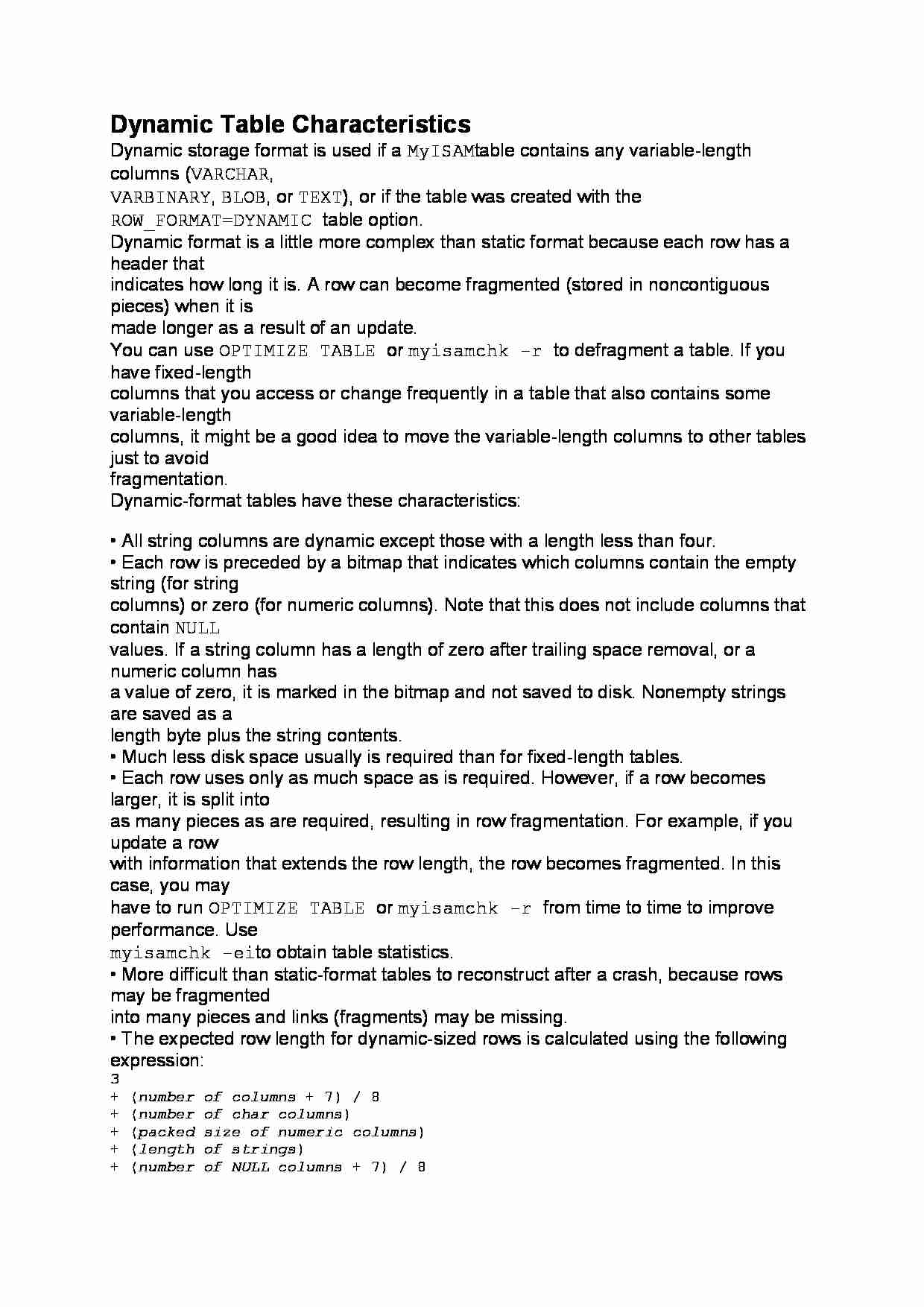To tylko jedna z 2 stron tej notatki. Zaloguj się aby zobaczyć ten dokument.
Zobacz
całą notatkę


Dynamic Table Characteristics
Dynamic storage format is used if a MyISAM table contains any variable-length columns (VARCHAR,
VARBINARY, BLOB, or TEXT), or if the table was created with the ROW_FORMAT=DYNAMIC table option.
Dynamic format is a little more complex than static format because each row has a header that
indicates how long it is. A row can become fragmented (stored in noncontiguous pieces) when it is
made longer as a result of an update.
You can use OPTIMIZE TABLE or myisamchk -r to defragment a table. If you have fixed-length
columns that you access or change frequently in a table that also contains some variable-length
columns, it might be a good idea to move the variable-length columns to other tables just to avoid
fragmentation.
Dynamic-format tables have these characteristics:
• All string columns are dynamic except those with a length less than four.
• Each row is preceded by a bitmap that indicates which columns contain the empty string (for string
columns) or zero (for numeric columns). Note that this does not include columns that contain NULL
values. If a string column has a length of zero after trailing space removal, or a numeric column has
a value of zero, it is marked in the bitmap and not saved to disk. Nonempty strings are saved as a
length byte plus the string contents.
• Much less disk space usually is required than for fixed-length tables.
• Each row uses only as much space as is required. However, if a row becomes larger, it is split into
as many pieces as are required, resulting in row fragmentation. For example, if you update a row
with information that extends the row length, the row becomes fragmented. In this case, you may
have to run OPTIMIZE TABLE or myisamchk -r from time to time to improve performance. Use
myisamchk -ei to obtain table statistics.
• More difficult than static-format tables to reconstruct after a crash, because rows may be fragmented
into many pieces and links (fragments) may be missing.
• The expected row length for dynamic-sized rows is calculated using the following expression:
3
+ (number of columns + 7) / 8
+ (number of char columns)
+ (packed size of numeric columns)
+ (length of strings)
+ (number of NULL columns + 7) / 8
There is a penalty of 6 bytes for each link. A dynamic row is linked whenever an update causes an
enlargement of the row. Each new link is at least 20 bytes, so the next enlargement probably goes in
the same link. If not, another link is created. You can find the number of links using myisamchk -
ed. All links may be removed with
... zobacz całą notatkę




Komentarze użytkowników (0)